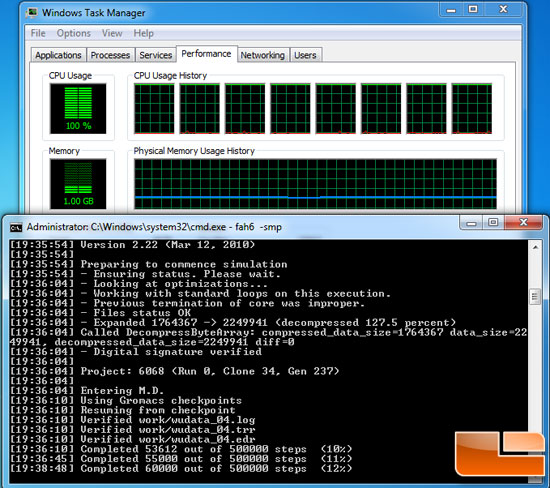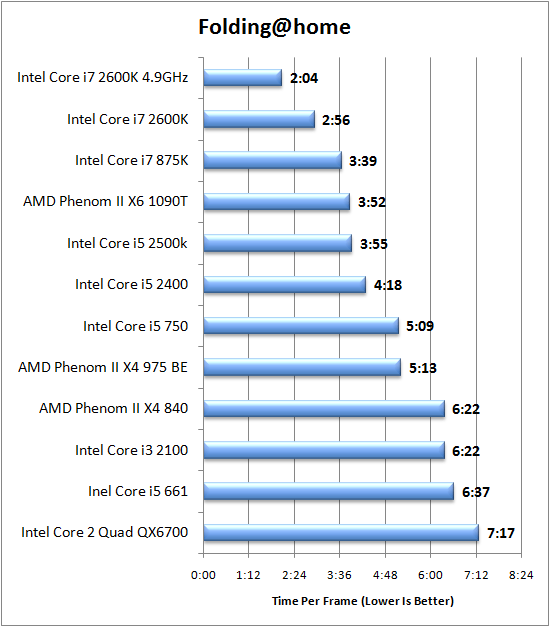Intel Unveils Sandy Bridge: Core i7 2600K, i5 2500K, i5 2400, i3 2100 CPUs
Folding@home
Folding@home is a distributed computing project — people from throughout the world download and run software to band together to make one of the largest supercomputers in the world. Every computer takes the project closer to our goals. Folding@home uses novel computational methods coupled to distributed computing, to simulate problems millions of times more challenging than previously achieved. Moreover, when proteins do not fold correctly (i.e. “misfold”), there can be serious consequences, including many well known diseases, such as Alzheimer’s, Mad Cow (BSE), CJD, ALS, Huntington’s, Parkinson’s disease, and many Cancers and cancer-related syndromes.
The work unit we used was a p6054 which is part of the SMP high performance client for Folding@home.


Folding@home has made great strides with the new A3 folding client; it scales very well across multiple physical cores as well as Hyper threaded cores. Clock speed and memory play a huge part in SMP folding performance. The now four year old QX6700 is bested by everything else in our test. The Core i3 2100 is able to outperform the i5 661 despite a 350MHz clock speed deficit due to its more effective memory controller. The i5 2500K is turning in some impressive results; without the advantage of Hyperthreading it loses to the i7 875K by only 16 seconds. Simply upping the clock speed 100-200MHz should even out their performance if not put the i5 2500K ahead.
The i7 2600K stands at the top of the heap with a 43 second advantage over the Core i7 875K. When overclocked to 4.9GHz the i7 2600K improves its performance by nearly 30%!

Comments are closed.